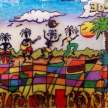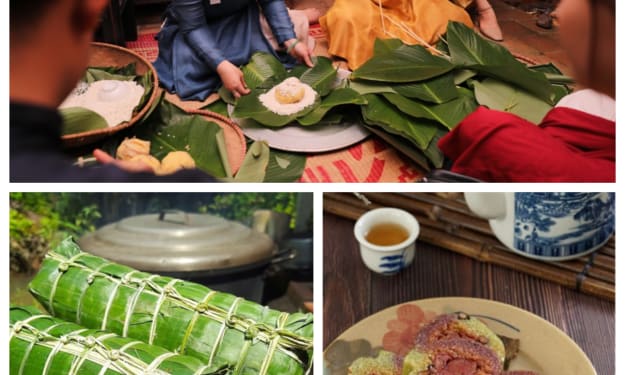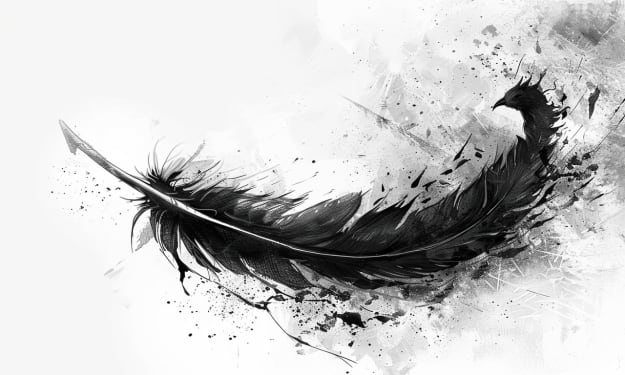What is Pahiyas? Everything You Need to Know About the Filipino Festival!
Embrace the colors, flavors, and warmth of Pahiyas, and take home unforgettable memories of one of the most beautiful festivals in the world.

Introduction
Pahiyas Festival, celebrated annually in the town of Lucban in the province of Quezon, Philippines, is one of the country's most vibrant and visually stunning festivals. This article explores the history, traditions, and unique features of Pahiyas Festival, offering a comprehensive guide to everything you need to know about this colorful celebration.
1. The Origins of Pahiyas Festival
Historical Background
Pahiyas Festival traces its origins back to the Spanish colonial era when Filipino farmers paid tribute to San Isidro Labrador, the patron saint of farmers, in gratitude for a bountiful harvest. San Isidro Labrador, also known as Saint Isidore the Laborer, is widely revered in agricultural communities for his role as a protector and provider of good harvests.
Early Celebrations
Originally, farmers brought their harvests to the church to be blessed, but as the tradition evolved, it became more elaborate, with each household displaying their produce and decorations on their facades to receive blessings from the saint. Over time, this practice transformed into the grand spectacle known as the Pahiyas Festival.
2. The Meaning of Pahiyas
Etymology
The word "Pahiyas" comes from the Filipino term "payas," which means to decorate or adorn. The festival’s name reflects the tradition of decorating houses with agricultural produce and other ornaments in a spectacular display of creativity and gratitude.
Symbolism
Pahiyas symbolize the community’s gratitude for a fruitful harvest and the desire for continued prosperity. It also represents the harmonious relationship between the people of Lucban and nature, showcasing their respect for and dependence on agricultural bounty.
3. When and Where is Pahiyas Celebrated?
Date and Timing
Pahiyas Festival is celebrated on May 15 each year, coinciding with the feast day of San Isidro Labrador. The festivities usually start early in the morning and continue throughout the day, with various activities and events drawing both locals and tourists.
Location
The festival takes place in the town of Lucban in Quezon Province, located about 120 kilometers southeast of Manila. Lucban, known for its cool climate and picturesque scenery, becomes a bustling hub of activity during Pahiyas, attracting thousands of visitors who come to witness the vibrant celebrations.
4. How is Pahiyas Celebrated?
House Decorations
One of the most distinctive features of Pahiyas Festival is the elaborate decoration of houses. Each household participates in a friendly competition to create the most beautiful and eye-catching display on their facades. The decorations typically include:
Kiping: Brightly colored rice wafers that are shaped into various forms, such as leaves, flowers, and other motifs. Kiping is a signature element of Pahiyas decorations and adds a vibrant splash of color to the displays.
Agricultural Produce: Fresh fruits, vegetables, and grains are artistically arranged to showcase the abundance of the harvest. These produce items are often incorporated into intricate designs and patterns.
Handicrafts: Locally made crafts, including hats, baskets, and woven items, are used to adorn the houses, highlighting the town’s rich artisanal traditions.
The Procession
The highlight of Pahiyas Festival is the grand procession honoring San Isidro Labrador. A statue of the saint is paraded through the streets, accompanied by various religious and cultural performances. Locals and visitors line the streets to watch the procession, which is filled with music, dancing, and vibrant costumes.
Key Elements:
Carroza: The statue of San Isidro Labrador is placed on a decorated carroza (float) and carried through the town.
Participants: The procession includes a mix of religious figures, local officials, and community members dressed in traditional attire.
Festive Atmosphere: The air is filled with the sounds of marching bands, chants, and cheers from the crowd.
Cultural Performances and Competitions
Pahiyas Festival features a variety of cultural performances and competitions that add to the festive atmosphere. These include:
Street Dancing: Local dance groups perform traditional and contemporary dances, often incorporating themes related to agriculture and the harvest.
Parades: In addition to the religious procession, there are parades showcasing local talents, costumes, and floats designed by various community groups.
Contests: Competitions are held for the best-decorated house, best kiping design, and other categories, encouraging creativity and community participation.
Food and Souvenirs
No festival in the Philippines is complete without an array of delicious food, and Pahiyas is no exception. Visitors can sample a variety of local delicacies, including:
Lucban Longganisa: A famous garlic-flavored sausage unique to the region.
Pancit Habhab: A traditional noodle dish served on banana leaves and eaten without utensils.
Kakanin: A range of traditional Filipino rice cakes and sweets.
Souvenirs, such as miniature kiping decorations, handcrafted items, and local products, are available for purchase, providing visitors with keepsakes to remember their Pahiyas experience.
5. The Role of the Community in Pahiyas
Community Participation
Pahiyas Festival is a true community event, with residents of Lucban taking an active role in the preparations and celebrations. Each household and local organization contributes to the festival’s success, from designing and creating decorations to participating in performances and contests.
Tourism and Economic Impact
The festival has a significant impact on the local economy, drawing thousands of tourists to Lucban each year. This influx of visitors provides a boost to local businesses, including hotels, restaurants, and shops. The increased visibility also promotes Lucban as a cultural and tourist destination, benefiting the community long after the festival ends.
Sustainability and Preservation
Efforts are made to ensure that the festival remains sustainable and environmentally friendly. For example, the use of natural materials like kiping and agricultural produce for decorations minimizes waste and promotes the use of local resources. Additionally, the festival helps preserve traditional crafts and practices by showcasing them to a wider audience.
6. Tips for Attending Pahiyas Festival
Planning Your Visit
If you're planning to attend Pahiyas Festival, consider the following tips to make the most of your experience:
Accommodation: Book your accommodation well in advance, as hotels and guesthouses in Lucban fill up quickly during the festival. Alternatively, consider staying in nearby towns and commuting to Lucban for the day.
Travel Arrangements: Lucban is accessible by bus or private car from Manila and other major cities. Be prepared for heavy traffic and plan your journey accordingly.
Weather: May is typically warm and humid in Lucban, so dress comfortably and bring sunscreen, a hat, and plenty of water.
Navigating the Festival
To fully enjoy the Pahiyas Festival, keep these practical tips in mind:
Arrive Early: To avoid the crowds and secure a good viewing spot, arrive early in the morning, especially if you want to witness the house decorations and procession up close.
Respect Local Customs: Be respectful of local customs and traditions. Ask for permission before taking photographs of people or their homes, and dress modestly, especially if you plan to visit churches or religious sites.
Explore Beyond the Main Events: Take time to explore Lucban’s charming streets, visit local shops, and try the regional cuisine. Engaging with the community will enrich your festival experience.
Safety and Etiquette
While Pahiyas Festival is generally a safe and friendly event, keep these safety tips in mind:
Stay Hydrated: The festival can be physically demanding, with lots of walking and time spent outdoors. Drink plenty of water and take breaks as needed.
Watch Your Belongings: As with any crowded event, keep an eye on your belongings and be cautious of pickpockets.
Follow Instructions: Pay attention to instructions from festival organizers and local authorities, especially during the procession and other major events.
Conclusion
Pahiyas Festival is a spectacular celebration that offers a unique blend of cultural heritage, community spirit, and visual splendor. From the elaborate house decorations and lively processions to the delicious local food and engaging performances, the festival provides a vibrant and immersive experience that captures the essence of Filipino culture and tradition.
Attending Pahiyas Festival in Lucban is not just about witnessing a colorful event; it’s about participating in a centuries-old tradition that celebrates the harmony between nature, agriculture, and community. Whether you're a first-time visitor or a returning guest, Pahiyas offers something new and enchanting with each celebration, making it a must-visit festival in the Philippines. Embrace the colors, flavors, and warmth of Pahiyas, and take home unforgettable memories of one of the most beautiful festivals in the world.
About the Creator
ED CLEFF
I have over a decade of experience in crafting compelling and diverse content. My portfolio spans multiple industries, including technology, healthcare, finance, and lifestyle, given me an added advantage in all my areas of specialization.
Enjoyed the story? Support the Creator.
Subscribe for free to receive all their stories in your feed. You could also pledge your support or give them a one-off tip, letting them know you appreciate their work.






Comments
There are no comments for this story
Be the first to respond and start the conversation.